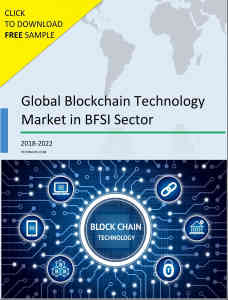From being a conceptual buzz to emerging as a mainstream business discussion, blockchain technology has touched a wide range of industries. This takes us back to the WEF prediction that by 2027, close to 10% of the global GDP will be accounted for using blockchain. One geographical region which is witnessing a major surge of innovation in the blockchain technology is APAC. According to our industry experts, massive digitization of payment solutions along with solid regulatory environment and strong interconnectivity makes APAC the newest hotbed for innovations in blockchain technology.
 Decoding blockchain technology
Decoding blockchain technology
In simple words, blockchain is a distributed ledger technology through which assets and transactions can be tracked and recorded. The presence of a central trust authority such as a bank is not required.
Through the blockchain technology peers can exchange data, currencies, and other assets in a transparent and cost-effective manner. As the data in blockchains are secured through cryptography, it is very difficult for hackers to gain access to it.
Blockchain platforms can be both public as well as private. Bitcoin is an example of a public platform which allows anyone to submit a transaction and take part in validating other transactions.
Read: Bitcoin Spearheads the Global Digital Cryptocurrency Market that is Rapidly Turning Relevant
Of all the industries, the financial sector is one of the first to sense the immense potential of blockchain technology. Better asset management, quick cross-border payments, and swift processing of insurance claims are a few good examples of blockchain financial services.
Smart property, IoT, healthcare sector, and government organizations too have switched to blockchain technology to enhance data handling and synchronize the entire work process.
The future of blockchain technology is in APAC
High demand for financial inclusion, backed with the need for convenient and affordable products in the APAC region has turned out to be a fertile ground for blockchain technology to flourish.
The fact that large number of Asians working outside their home country are looking for affordable system of money transfers is a further boost to the blockchain technology. Cross-border settlement costs can be cut down significantly through the blockchain system. Maybank Singapore has already leveraged this technology by providing real-time, cost-effective, international payments system to migrants who don’t have access to banking.
 The conducive forward-looking regulatory environment of the APAC region is what makes the future of blockchain secure. Moreover, as governments in this region suffer from “trust deficit”, the blockchain technology is seen as a potent tool to bring in transparency in the handling of the financial system. Keeping this scenario in mind, China’s central bank has come up with a sovereign blockchain digital currency to provide a flexible regulatory environment. South Korea and Japan have already regulated cryptocurrency environments, and their central banks are in the process of licensing exchanges.
The conducive forward-looking regulatory environment of the APAC region is what makes the future of blockchain secure. Moreover, as governments in this region suffer from “trust deficit”, the blockchain technology is seen as a potent tool to bring in transparency in the handling of the financial system. Keeping this scenario in mind, China’s central bank has come up with a sovereign blockchain digital currency to provide a flexible regulatory environment. South Korea and Japan have already regulated cryptocurrency environments, and their central banks are in the process of licensing exchanges.
Another interesting example of how blockchain has profitably entered the APAC countries is illustrated by the microfinance scenario in Myanmar. BC Finance, one of the biggest microfinance institutions in Myanmar, has collaborated with a Japanese firm to record transactions on blockchain. The aim is to reduce costs and administrative complexity of tracking large numbers of small transactions.
Thus, it is convenient to conclude that the future of blockchain technology and related innovations will be massively played out in the APAC region. Though not a magical solution for all the financial and data related anomalies, blockchain has surely opened the doors for a cleaner and transparent data management and financial transaction system.



